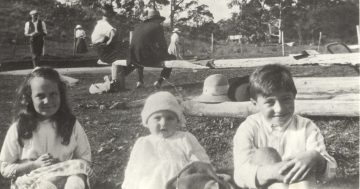
John Blom with Rafael Nadal and Novak Djokovic at an exhibition match in Bangkok. Photo: Supplied.
John Blom lasted around a year in the public service in Canberra before deciding that there was another world to be conquered. It was a world he had become familiar with while studying International Relations and Politics at the ANU.
John worked his way through university as a global tennis umpire, effectively travelling the world while completing his degree from far-flung locales.
As a tennis enthusiast, his elevation to this point had its origins as a schoolboy in Sydney.
“I started as a volunteer line umpire at the NSW Open at White City in the late 80s, early 90s. In those days, it was a case of being available and doing a course covering the basic rules of tennis. I then got the opportunity to do some chair umpiring on the back courts and it went from there.”

John Blom officiating at the Davis Cup in Kazakhstan. Photo: Supplied.
What was a part-time job through university is now John’s profession.
He is Australia’s top-ranked chair umpire and one of only 25 worldwide ranked chair umpires active at the gold badge level.
“I’ve been a chair umpire at a higher level since the late 90s before becoming a gold badge umpire in 2012. We are a small group. All the major tournaments are covered by the top officials; it’s important for the players to have consistency.”
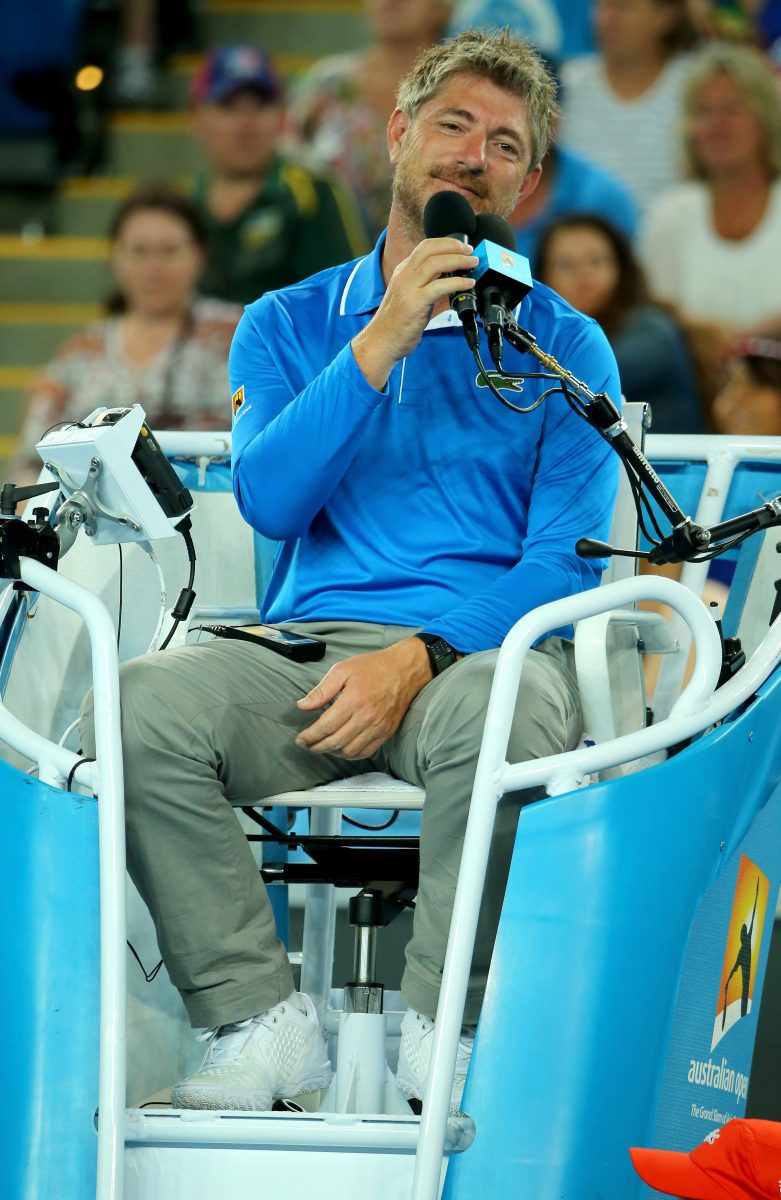
John umpiring in 2015 at the Australian Open in Melbourne. Photo: Supplied.
John has umpired three Australian Open finals, including the 2013 men’s decider in which Novak Djokovic defeated Andy Murray in four sets to become the first male player in the open era to win the Australian Open three years in a row.
Says John, “It was the one I felt most anxious about, and there was a sense of satisfaction at the end of the final.”
I can’t help but be envious of his best seat in the house for the biggest matches in the sport. And John admits it is a great vantage point but is fully aware of why he is there. “I have a job to do,” he says in that concentrated way that seems to be part of the culture of elite officials.
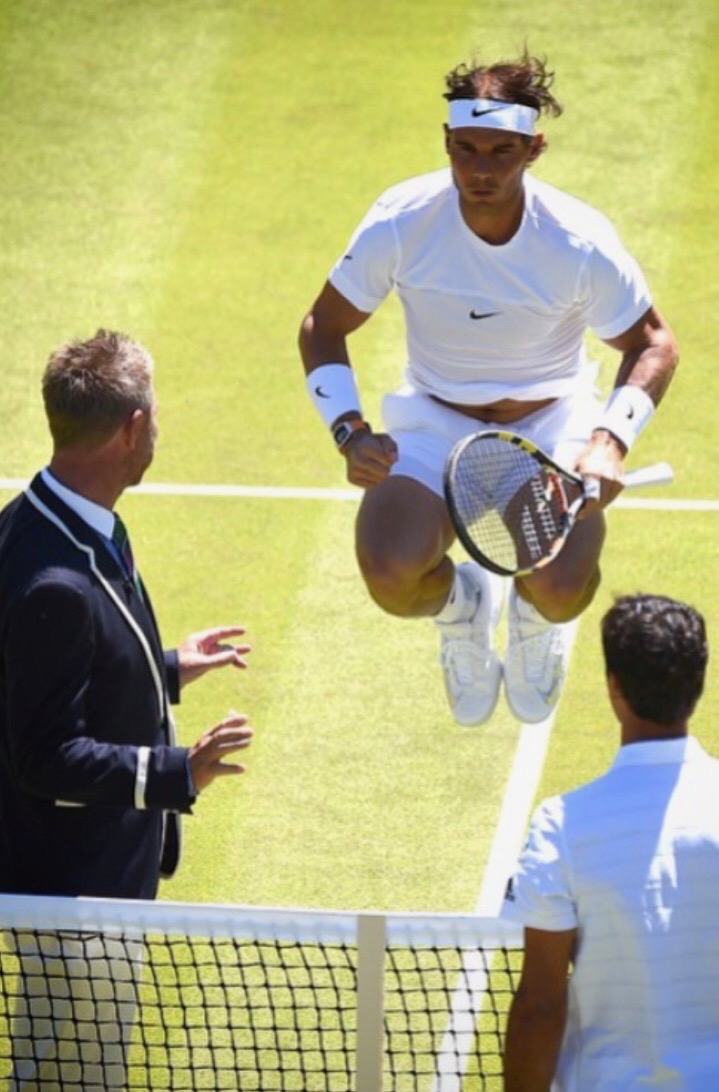
John at Wimbledon with a jumping Nadal. Photo: Supplied.
While he officiates predominantly in the major, mainstream events, there is also plenty of time spent on the second-tier Challenger Tour.
The Challenger Tour can be confronting when officiating in less developed parts of the world.
John recalls a tournament in rural India where a number of the courts weren’t completed, there wasn’t a roof on the players’ locker rooms, the officials’ office had no doors and “a cow walked into our office and couldn’t back out. It was stuck until it was pulled out by local farmers”.
Pre-COVID, John was spending 30 weeks of the year officiating and another five to six weeks travelling. But during COVID, things came to a halt. His last tournament was the French Open in October last year.
The enforced layoff at home in Canberra came at the right time after 20 years on the road.
“I definitely do enjoy the opportunity to travel. The COVID break has made me realise, though, that I had to have some time off, and it has been great to spend time in Canberra having a normal life.”
There have been times when he has wanted to switch off from tennis umpiring, especially on long haul flights overseas.
“My job certainly is a talking point. There are times, though, when I’m less eager to talk about it as you find yourself telling the same stories in response to the same questions.”
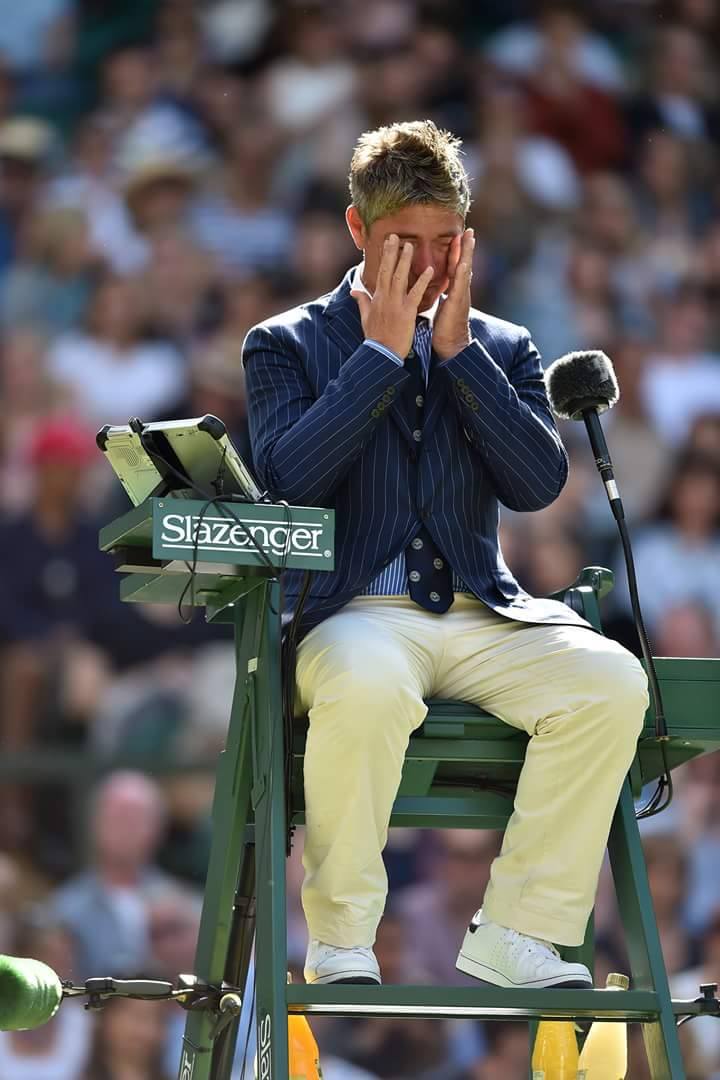
It’s not always an easy job! John suffering hayfever while working in London. Photo: Supplied.
One of these inevitable questions is: what is your favourite tournament to officiate?
“I love Wimbledon,” he says. “The history! It has something special with the grass; the tradition; London at that time of the year.”
There’s also the joy coupled with the pressure of involvement in his home tournament, the Australian Open.
At the moment, though, he is preparing to head back to London to officiate at Wimbledon, followed by the Tokyo Olympics. It will be his third Olympics as a chair umpire and his fifth as an official.
He says his wife Arina, a tennis coach, is fully understanding of his jet setting lifestyle.
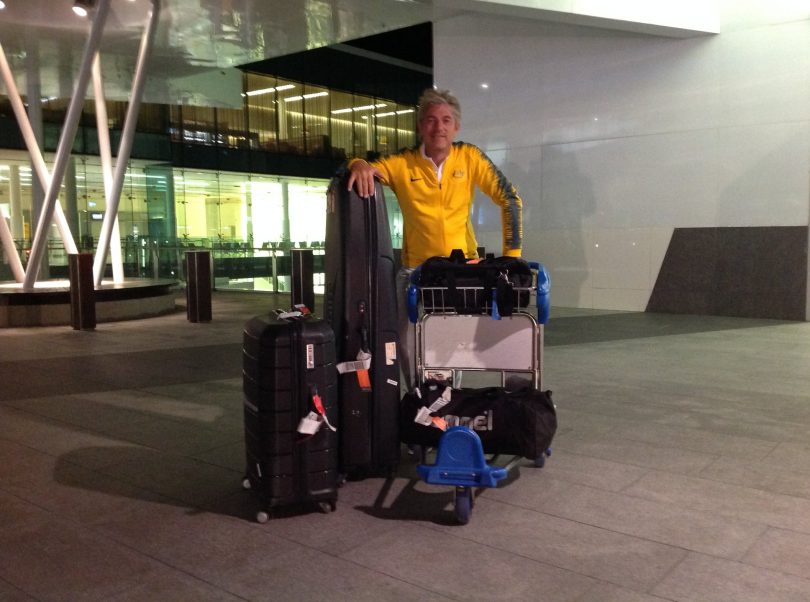
John on his way to the Rio Olympics in 2016. Photo: Supplied.
In the eyes of many, he is living the dream, but beyond the glamour, there is plenty of time living out of a suitcase coupled with the expectations involved in sport at this level – even when officiating.
Original Article published by Tim Gavel on The RiotACT.








